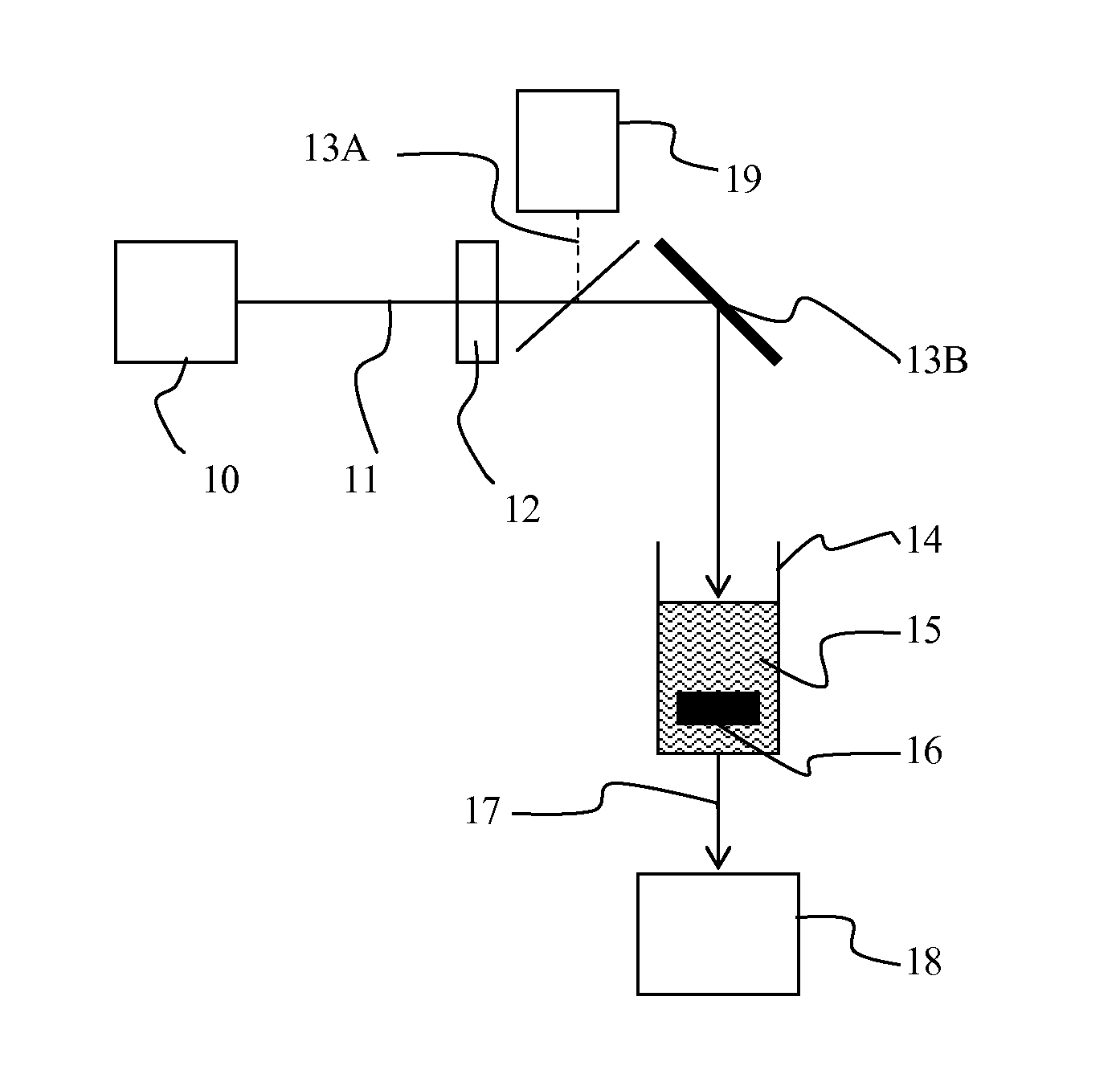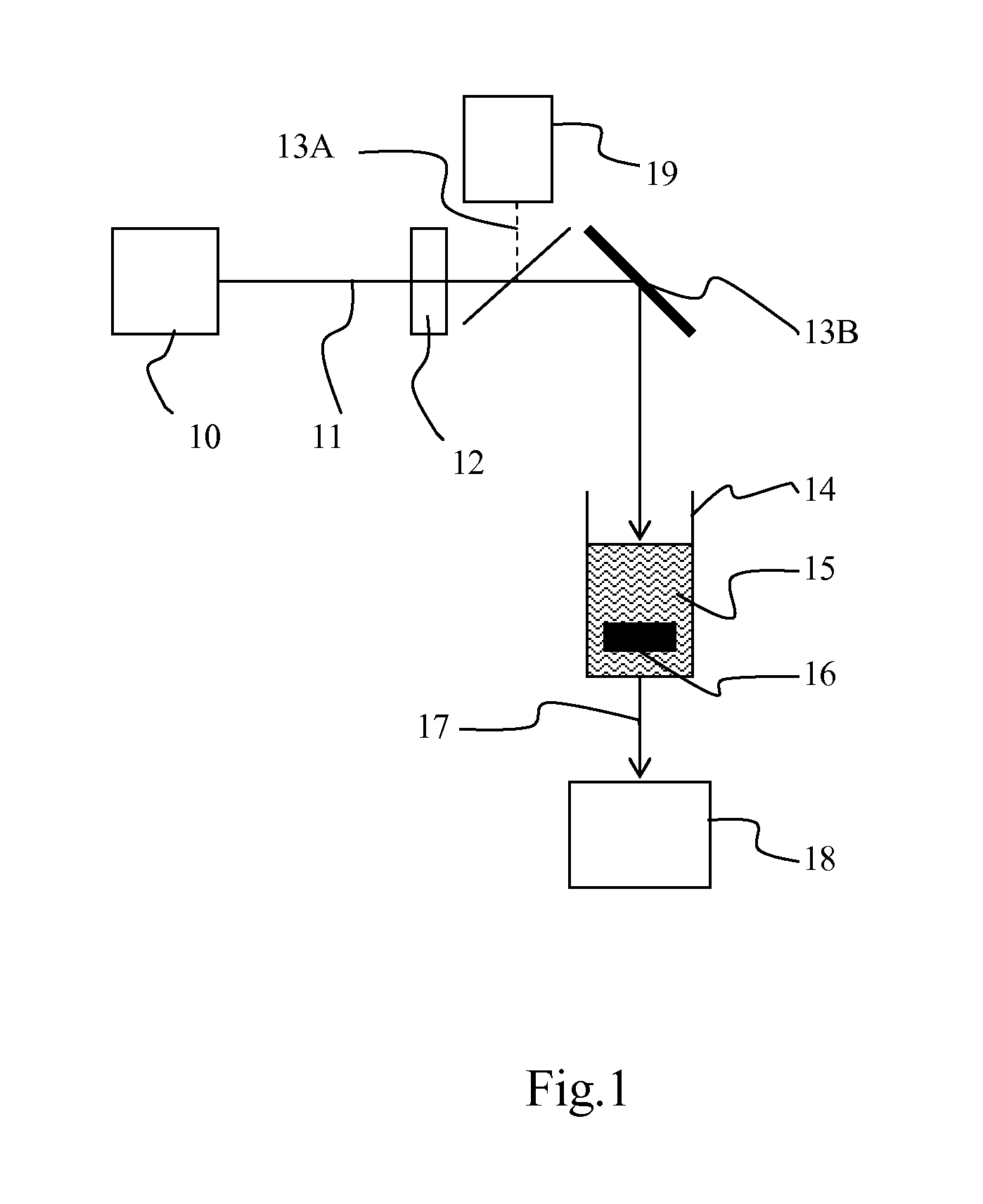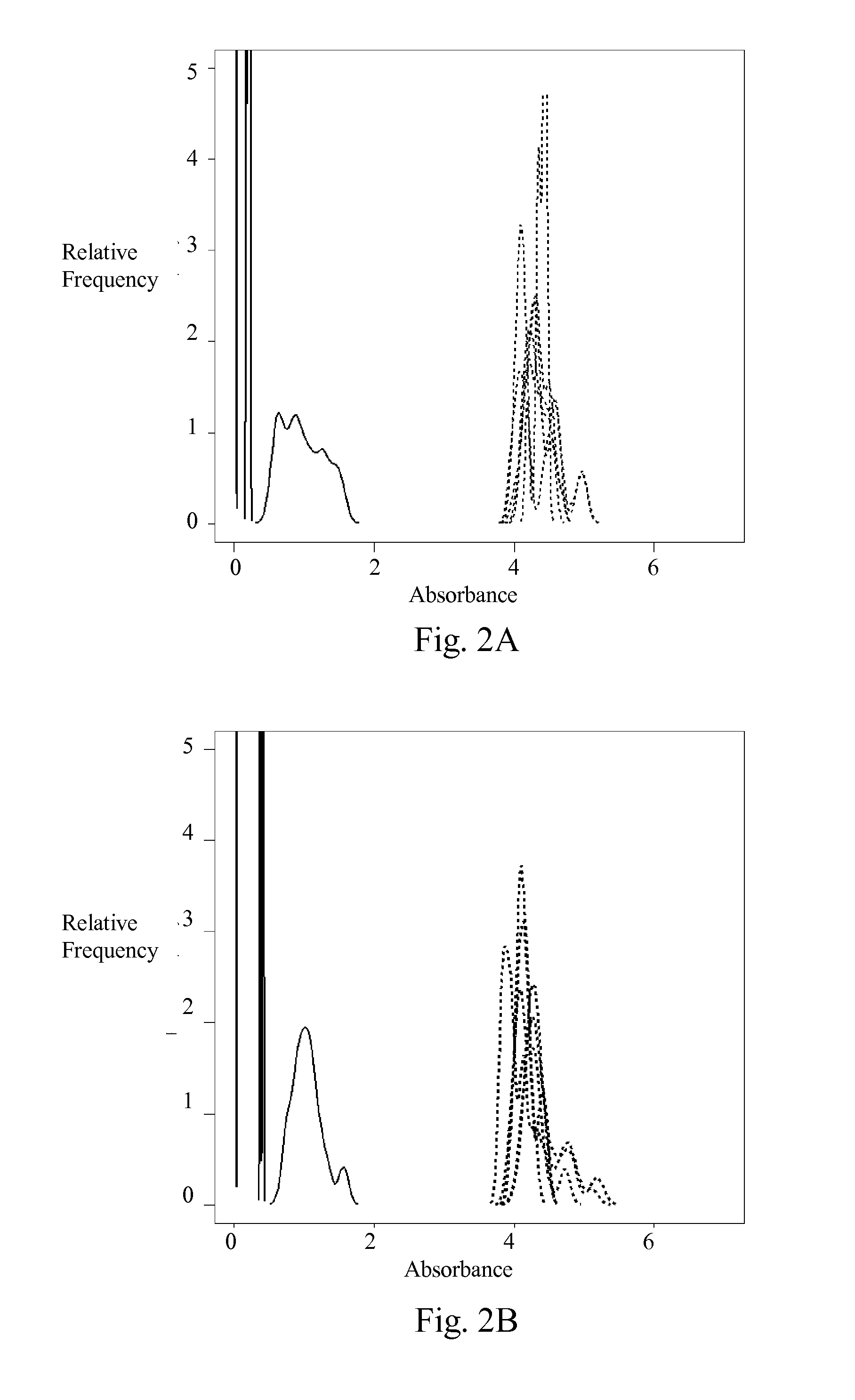Method and apparatus for detecting elution of samples
- Summary
- Abstract
- Description
- Claims
- Application Information
AI Technical Summary
Benefits of technology
Problems solved by technology
Method used
Image
Examples
example 1
TSH Analyte
[0036]
TABLE 1Mean, standard deviation, minimum, maximum andnumber of samples of absorbance measurement ofTSH-analyte for different sample types.SamplenMeanSTDMaxMinHkra 0.3274.330.164.674.00Hkr 0.3, disk removed94.240.234.594.02Hkr 0.4274.240.174.553.94Hkr 0.4 disk removed94.380.094.464.19Hkr 0.5274.440.254.984.14Hkr 0.6274.400.265.004.10White disk270.980.301.540.56No disk270.200.020.240.17Empty well270.040.000.050.03aHkr = haematocrite
example 2
nT4 Analyte
[0037]
TABLE 2Mean, standard deviation, minimum, maximum andnumber of samples of the absorbance measurement ofnT4-analyte for different sample types.SamplenMeanSTDMaxMinHkr 0.3274.150.134.483.94Hkr 0.3, disk removed93.990.164.283.83Hkr 0.4274.200.204.753.94Hkr 0.4, disk removed94.180.154.453.99Hkr 0.5274.410.265.114.08Hkr 0.6274.440.305.204.10White disk271.050.221.560.73No disk270.400.020.430.37Empty well270.040.000.050.04
example 3
GALT Analyte
[0038]
TABLE 3Mean, standard deviation, minimum, maximum andnumber of samples of the absorbance measurement ofGALT-analyte for different sample types.SamplenMeanSTDMaxMinA calibrator275.250.636.004.36B calibrator275.510.586.004.47C calibrator275.160.636.704.32D calibrator275.100.646.004.27E calibrator275.240.596.604.48F calibrator275.440.656.704.43N control275.470.516.134.69AbN control275.070.566.004.35Hkr 0.3272.960.383.862.31Hkr 0.3, disk removed92.310.192.532.03Hkr 0.4273.730.234.193.35Hkr 0.4, disk removed93.040.123.192.85Hkr 0.5274.760.576.004.05Hkr 0.6275.390.626.304.47White disk270.460.160.870.22No disk270.080.020.110.06Empty well270.040.000.040.03
PUM
 Login to View More
Login to View More Abstract
Description
Claims
Application Information
 Login to View More
Login to View More - R&D
- Intellectual Property
- Life Sciences
- Materials
- Tech Scout
- Unparalleled Data Quality
- Higher Quality Content
- 60% Fewer Hallucinations
Browse by: Latest US Patents, China's latest patents, Technical Efficacy Thesaurus, Application Domain, Technology Topic, Popular Technical Reports.
© 2025 PatSnap. All rights reserved.Legal|Privacy policy|Modern Slavery Act Transparency Statement|Sitemap|About US| Contact US: help@patsnap.com



